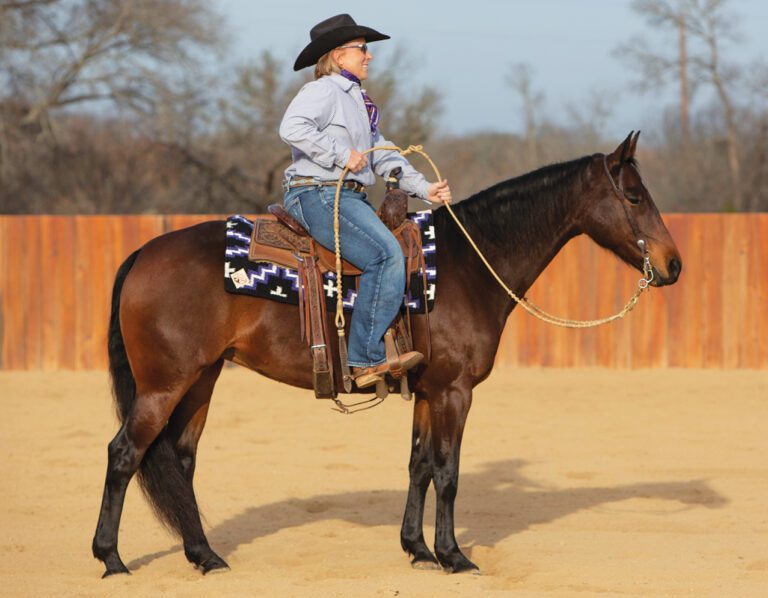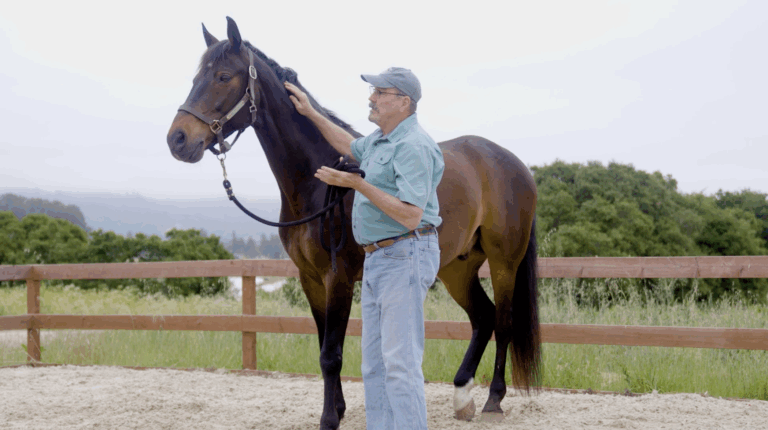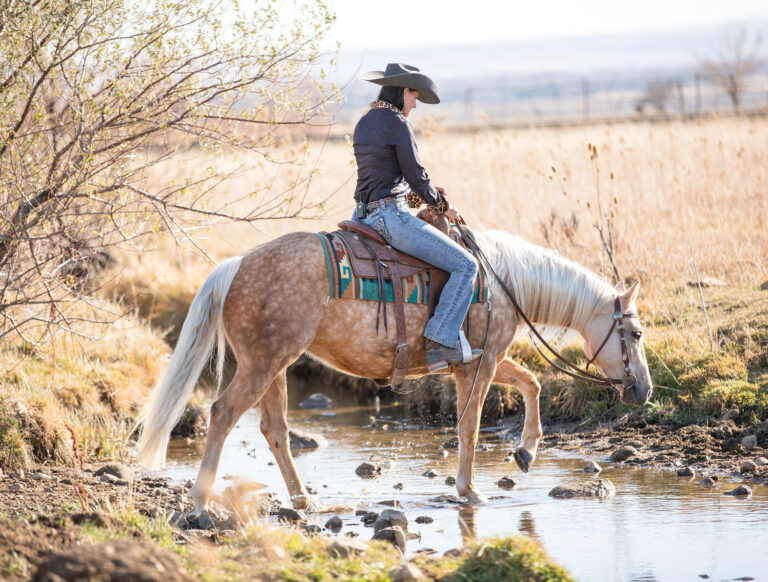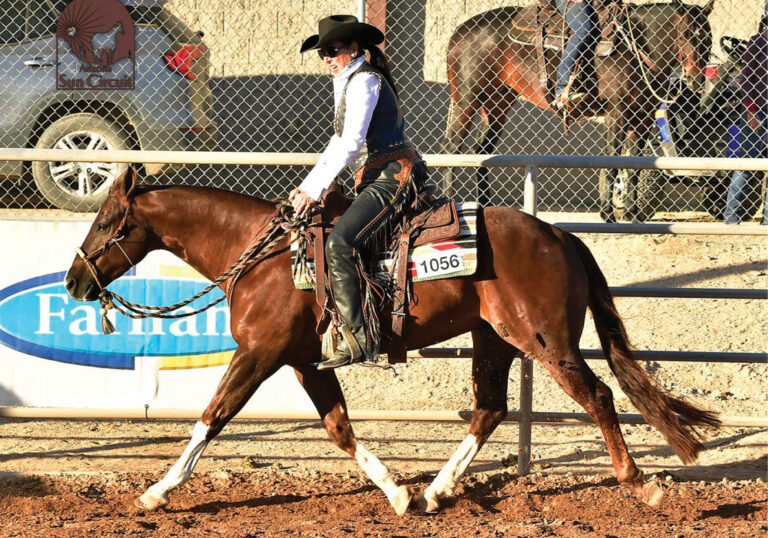A willing, straight backup demonstrates a good connection between your hands, your legs, and your horse’s mouth. I like to call this “over the top” training, because you make a circle of motion over the top of your horse, around through the bit, down to your legs, and back up to your body and hands.
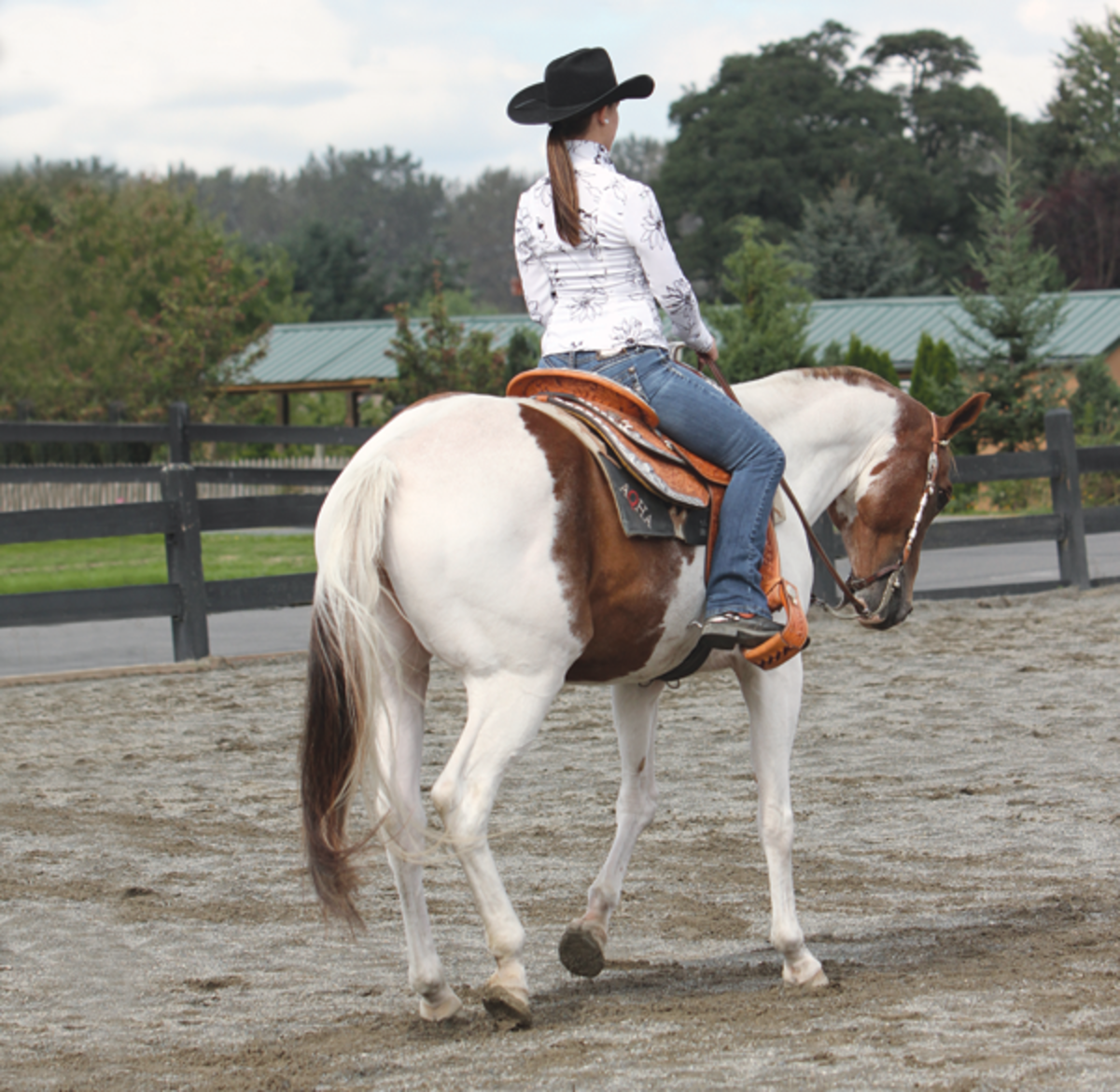
Many competitive classes require a horse to back a few steps, or even through an obstacle, but it’s also a necessary skill for general riding. The ability to easily move your horse backward to get out of any number of situations is crucial for all riding.
Here, I’ll explain my “over the top” philosophy further to demonstrate the optimal flow of motion for a willing backup. I’ll also point out common mistakes made when backing that interrupt that flow. With time and practice, you’ll be able to back your horse on a longer rein, just by lifting the slack and adding leg pressure.

2. This is the proper hand position for this “over the top” training. The rider’s hands are about pommel-height; they’re even in their placement; and they have a soft, giving feel on the reins.
3. The rider has taken the slack out of the reins, while keeping her hands low, to flex the horse’s neck at his poll. She hasn’t jerked on the bit, nor is she pulling too high or too low, which would prevent her horse from properly flexing.
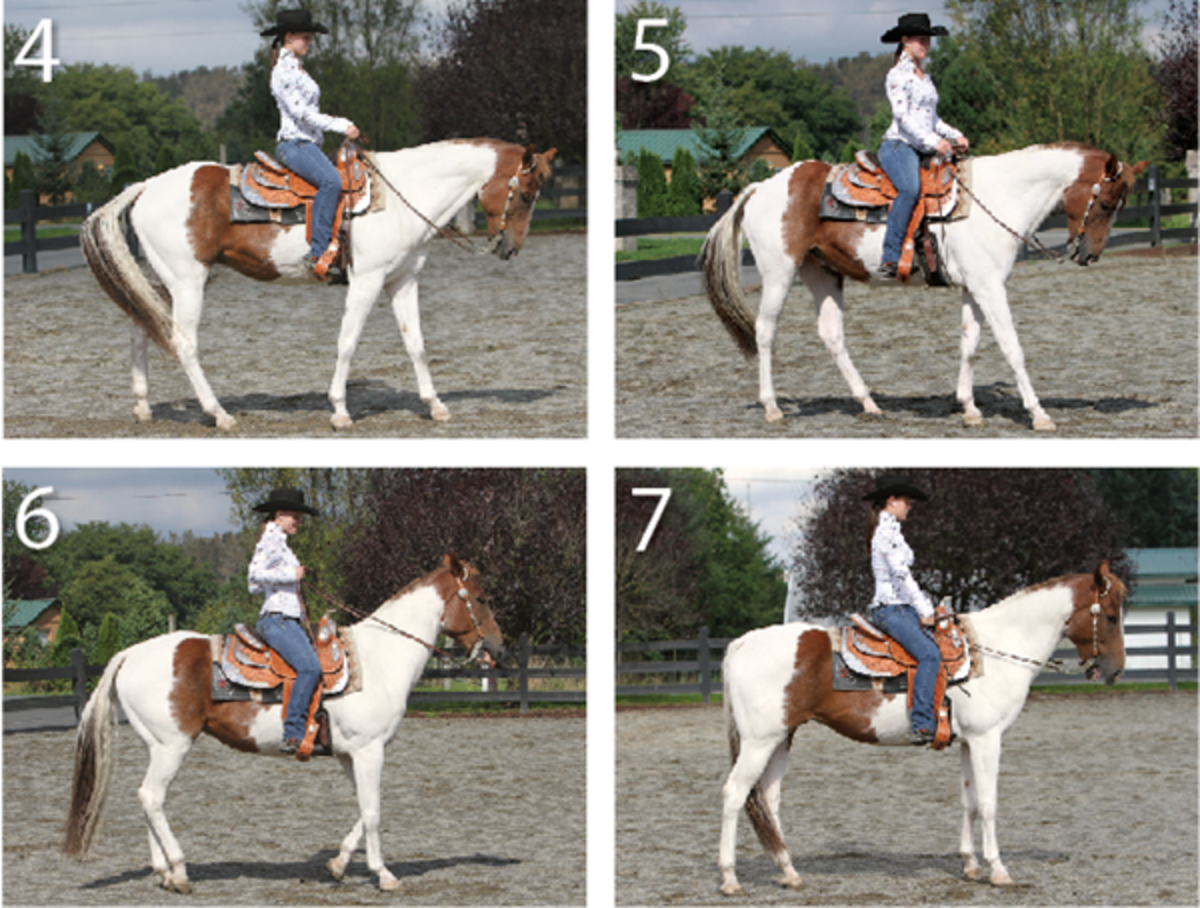
4.As the horse steps backward, the rider maintains the soft feel on his mouth and adds pressure from her legs and heels to encourage reverse steps. To keep the horse straight, the rider maintains equal pressure from both hands and both legs. If she used more pressure with one hand, leg, or foot, the horse would travel crooked, swinging his hips away from increased pressure.
5. Here you can really see what I call the “circle of lightness.” She’s using even pressure from her hands, legs, and heels to round her horse and ask him to move backward. From her legs, up to her seat and back, across her arms, down to her hands, and to the horse’s bit, you can see that circle of motion as the horse travels backward.
6. This photo illustrates many mistakes when striving for a willing, smooth, straight back. The “circle of lightness” isn’t a circle at all. Starting at the bottom of the circle, the rider’s feet and legs aren’t on the horse, her back is hollow and rigid, and her hands are too high (not to mention she needs to move her hands down the reins). The horse’s response is predictable: He doesn’t give at the poll, he gaps his mouth, and he resists backward movement.
7. Here’s the other extreme, with the rider’s hands too low. The result is the same, shown in the horse’s resistance. The rider has to do her part with her feet and legs, torso, and hands to get the desired collected response from the horse’s head and the willing backward movement.
Cindy Stephens-McCraw stands blue roan Quarter Horse stallion My Final Notice at her Riverside Ranch in Sultan, Washington. She also had a hand in the great success of Quarter Horses Dynamic Deluxe and Dynamic In The Dark. Learn more about Cindy and her horses at riversideranch.com.

